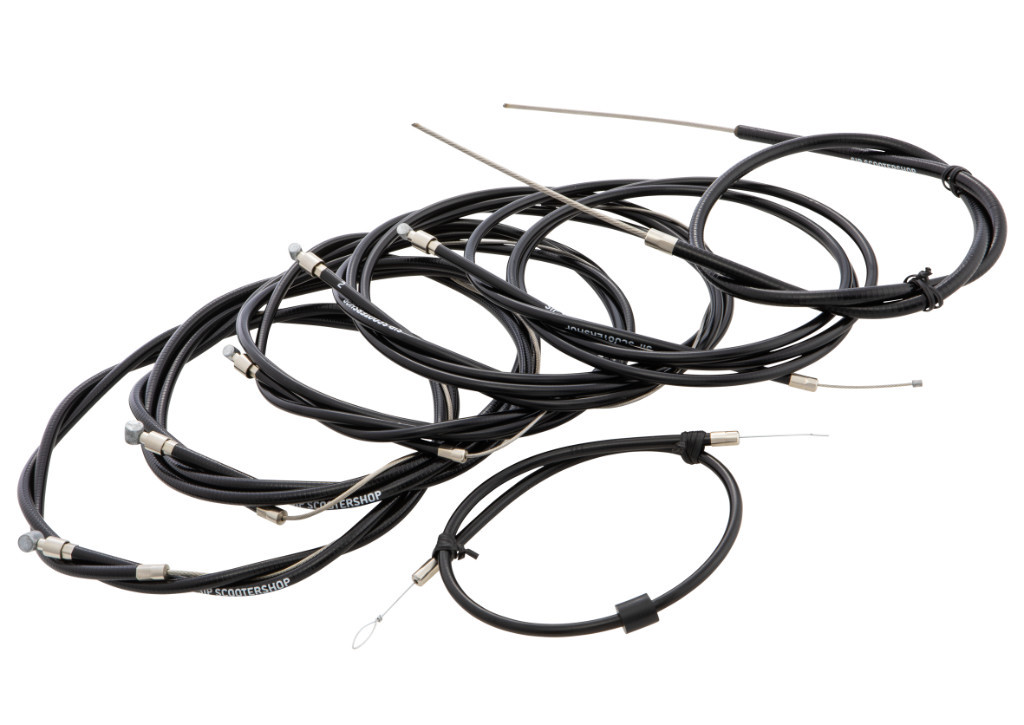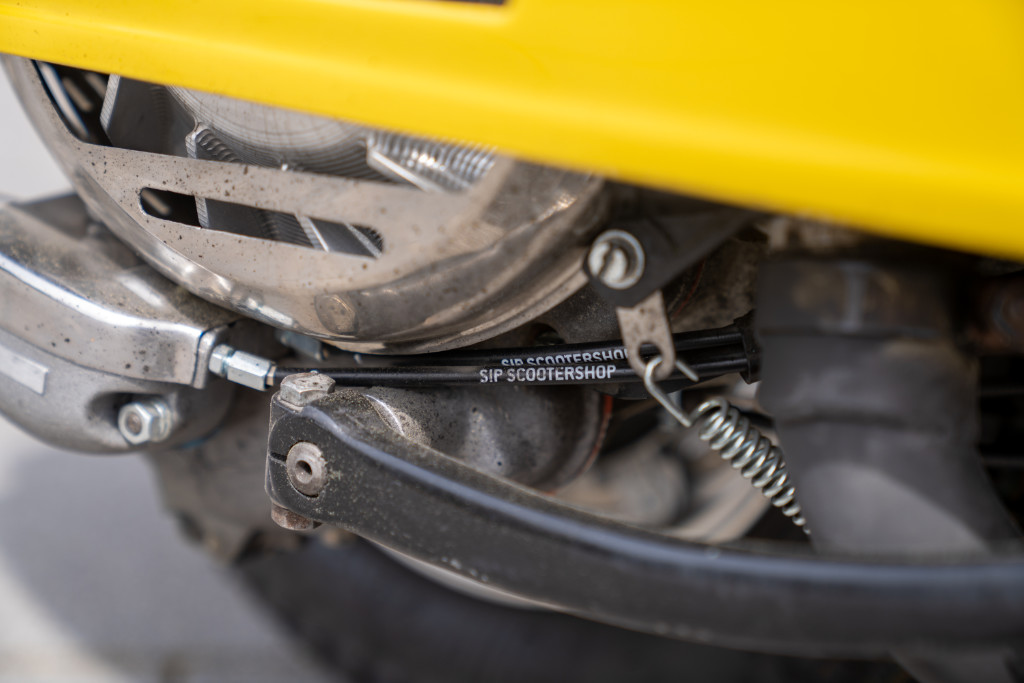In the newer Vespa models from the 2000s onwards, conventional cable pulls were completely dispensed with. The reasons for this progress were as necessary as they were superfluous. With the old technology of our hand-operated Vespas, various cable pulls were installed in order to be able to operate the scooter. The long and sometimes awkwardly laid cables on and in the frame are subject to more or less high maintenance intervals. In order to be able to use this time for maintenance and repair more for riding in the future, a lot of information and helpful tips are listed below.
Different models – different tasks
On the various model series of Vespas, the lengths and designs are often different, although the tasks are always the same. On models before the PK series, a 2-pull gearstick is predominantly installed. For this, two gear cables must be installed in order to be able to operate the gearshift rocker from the handlebar. The clutch must also be operated in the same process, which is achieved by the clutch cable, also on the handlebar. These three cables thus run from the handlebars to the rear of the engine block. Also starting from the handlebar is the throttle cable, with which the throttle grip is always reset. In addition, a choke cable is installed to operate the choke on the carburettor before starting. In addition, the two drum brakes are each operated by a cable.
Clean adjustment and great effect
Many Vespa riders fail to recognise the importance of properly adjusted cables. But well-maintained cables increase riding comfort and safety. For example, the braking performance of the two drum brakes can be noticeably increased by well adjusted brake cables. The gearstick can also be operated better and more precisely with a proper adjustment, as the distance covered is shorter. The same applies to the clutch cable, which requires less force and lever travel if it is well adjusted.
As far as adjustment is concerned, there are screws on the scooter that allow proper adjustment. For the front wheel, an adjustment screw has been installed on the brake base plate, while there is an adjustment screw on the rear wheel.
The adjustment of the gearstick is a little more complex, but with a little skill it can be done easily. First you have to shift into neutral. Then the two marks on the gearstick lever must be exactly next to each other. It is helpful to have a helper holding the gearstick lever so that it cannot move. Now the cables on the motor housing can be pulled out. Before this, the two clamping screws that fix the cables must be loosened. Sometimes it is necessary to unscrew a cover that protects the gearshift claw from dirt.
Now the new cables can be inserted and tightened.
In order to be able to test the gearstick, it is highly recommended to push the scooter forwards or backwards a metre beforehand.
Adjusting the choke, throttle and clutch cables is somewhat easier. The main thing here is to make sure that the cable is installed tightly. At the same time, however, the cables should not be tightened too much so as not to shorten the service life unnecessarily. Here, too, the optimum adjustment can easily be made by feel.
Regular maintenance and replacement required
Everyone should be aware that regular maintenance of the cables is necessary. Especially with brakes, the braking effect is partly due to the adjustment of the brake cables. In the worst case, a lack of braking effect can result in an accident or a fall. In addition to the cables themselves, the outer sheaths that allow the train to slide are often very porous and dilapidated from the effects of the weather. In these cases, they should of course also be replaced. In general, cables are one of the cheapest spare parts for a Vespa and should therefore be replaced more often than not. Particularly durable and useful are the special cable kits from SIP, which have been built after much research and testing so that they are easy to operate and ensure optimum power transmission.

When fitting, it is usually advisable to use new screw nipples and adjustment screws straight away. In addition, proper lubrication with grease or oil increases the service life of the cables. The exception is the cable sheaths made of PTFE, which should not be lubricated with oil or grease.
Tip: Especially on longer tours, a set of spare cables should ideally be in your luggage so that you don’t have to end the tour because of broken cables.
All in all, well-adjusted cables are responsible for the comfort and fun that Vespa riders want to have on their tours.



